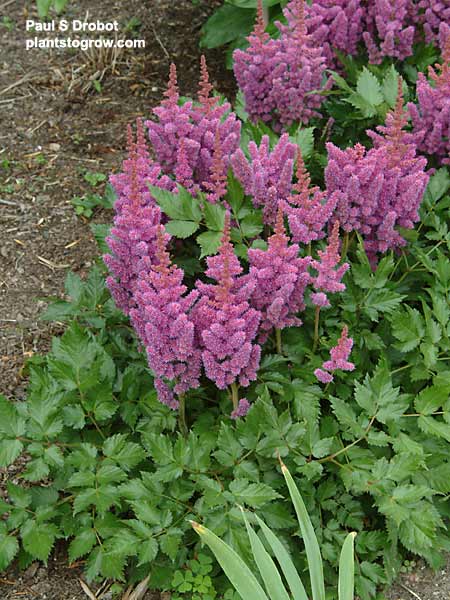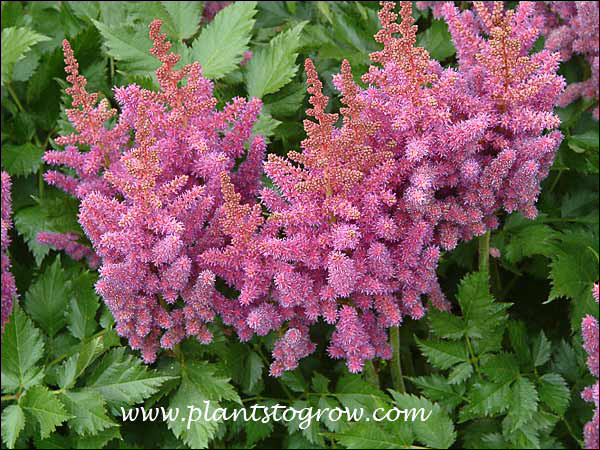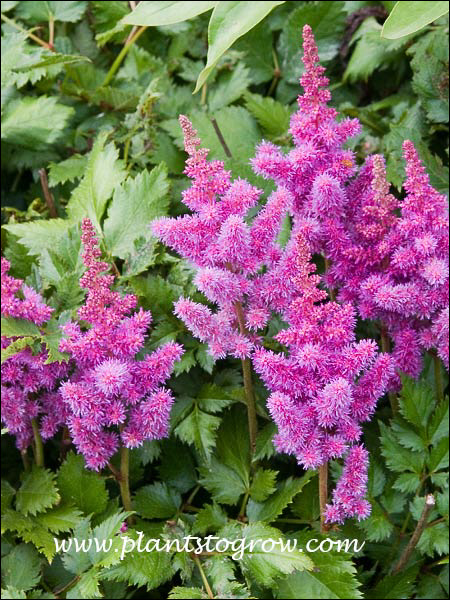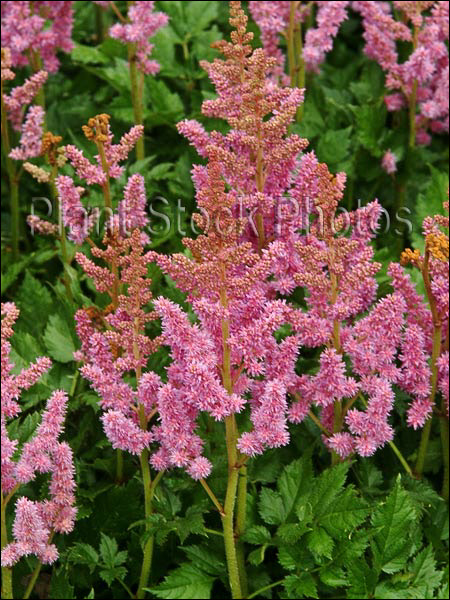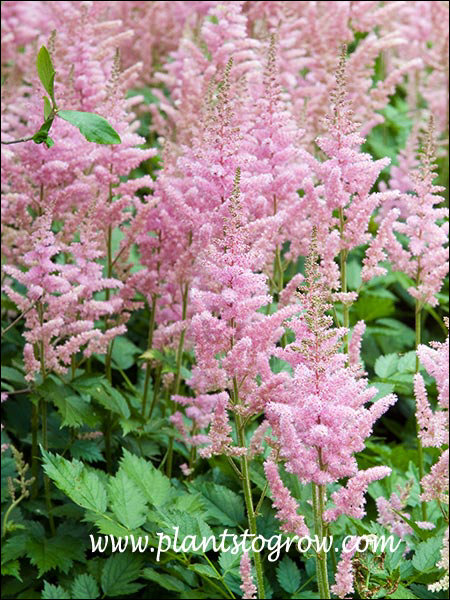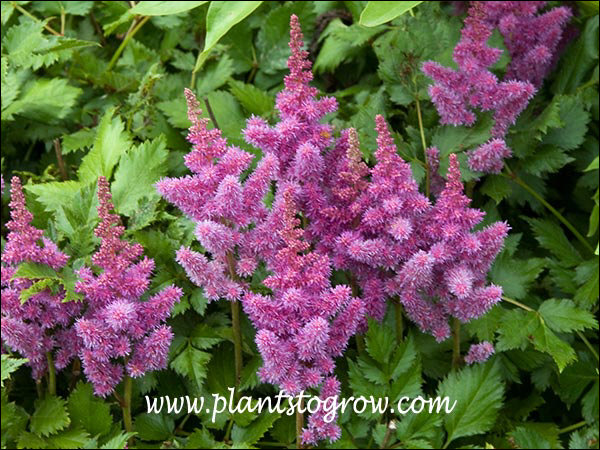| Description | An Astilbe with raspberry pink flowers. |
|---|---|
| Pronunciation | (ah-STIL-bee)(chi-NEN-sis) |
| Plant Type | All Plants, Perennials Hardy |
| Sunlight | Prefers semi-shaded sites will tolerate more light if the soil is kept moist. |
| Moisture | Needs moist soil. Plants growing in dry conditions will be small, few blooms and tend to dry up during the hotter days in the summer. The astilbe chinensis tend to be a bit more forgiving when it comes to drier conditions. |
| Soil & Site | rich, humusy moist well-drained soils |
| Flowers | raspberry pink |
| Fruit | The main factors to get maximum performance, are proper soil moisture, division and fertilizing. |
| Leaves | Leaves are green to bronze green, ternately compound with coarsely serrated leaflets. The dissected foliage is an attractive feature of the plant. |
| Dimensions | 15 inches tall with an equal or greater spread. |
| Maintenance | Division of the clumps every 2-3 years will help to maintain the vigor of the plant. Astilbe are heavy feeders and need to be fertilized every year in the spring and also in the early fall. Some of my Astilbe tend to heave in the winter. In the spring I cover the exposed roots with soil, mulch or dug them in. |
| Propagation | division in the spring, most cultivars will not come true from seed |
| Native Site | Native to China, Japan and Korea. |
| Misc Facts | George Arends of Germany was one of the first to create new varieties of Astilbe which lead to the plants popularity. |
| Author's Notes | I have a group of Astilbe in a 1/2 to 3/4 day sunspot for over 10 years and they are a showstopper when blooming. To achieve this they are growing in a bed that is raised a few inches and the soil is naturally constantly wet |
| Notes & Reference | #04-Herbaceous Perennial Plants (Allan Armitage), #40-Herbaceous Ornamental Plants (Steven Stills), #54-The Well Tended Garden (DiSabato-Aust)} |

Cart
